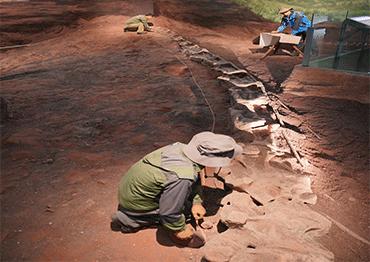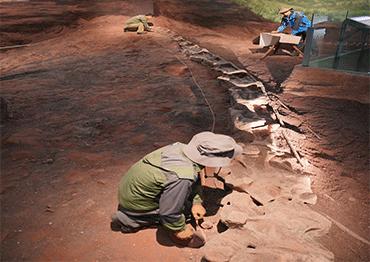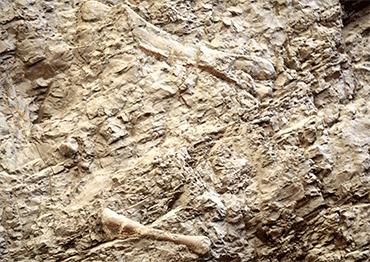n April, two geoparks in China were officially designated by the United Nations Educational, Scientific and Cultural Organization (UNESCO) as Global Geoparks. One is in Yunyang County, part of Chongqing Municipality in the country’s southwest, and the other is the Kanbula National Geopark in Qinghai Province in the country’s northwest.
Currently 229 sites, including 16 newly added ones in April, from 50 countries are recognized as UNESCO Global Geoparks for their international geological significance and management integrating protection, education and sustainable development. Among them, 49 are from China, more than any other country in the world.
Yunyang, located in the Three Georges Reservoir area, boasts a history of around 2,400 years as a county. But the two most important geological features of the Yunyang Geopark have a much longer history. The limestone karst landscape of the region, typically represented by the 335-meter deep sinkholes, one of the world’s deepest, formed 65 million years ago, around the time an asteroid slammed into Earth, thought to have caused the mass extinction of the dinosaurs. In February 2023, the construction of a national radar network project for deep-space observation of asteroids started in Yunyang.
Just six kilometers from the radar site is the “Great Wall of Dinosaur Fossils,” an 18-kilometer stretch of rock layers packed with fossils dating back nearly 170 million years. “In one extraordinary section, around 5,000 dinosaur fossils are exposed, offering unique insights into dinosaur evolution during the Middle Jurassic,” according to UNESCO. In an interview with China News Service (CNS), Dai Hui, vice president of the Chongqing Paleontological Institute, shared his insights on how to make use of China’s rich dinosaur fossil resources and improve scientific and cultural exchanges with the world.
CNS: How did Yunyang Geopark make its way onto the UNESCO list?
Dai Hui: The UNESCO Global Geoparks designation was created in 2015, building on an international partnership known as the Global Geoparks Network (GGN) first initiated in 2004. [Eight] Chinese geoparks [along with 17 in Europe] were founding members of the GGN [with the support of UNESCO].
Yunyang Geopark is home to geological relics of global significance and rich natural and cultural resources, with remarkable achievements in geological conservation, scientific research and education, and these meet the requirements of being a Global Geopark.
Yunyang Geopark covers an area of 1,124 square kilometers. It’s home to geological relics, natural and cultural heritage that require special protection, as well as sustainable development communities with quite a number of residents, which aligns with the idea of how a Global Geopark should develop.
CNS: What role did the vast trove of dinosaur fossils play in Yunyang’s successful Global Geopark designation?
DH: The Yunyang Middle Jurassic dinosaur fossil fauna is Yunyang Geopark’s only world-class geological remnant. It leads the world in number, type and distribution of dinosaur fossils.
Chongqing Municipal Bureau of Planning and Natural Resources moved quickly after dinosaur fossils were first discovered in Yunyang in 2015, carrying out research which eventually led to identification of the dinosaur fauna. Major progress and discoveries so far include excavation of the largest single Jurassic dinosaur fossil wall in the world, excavation of over 10,000 dinosaur bone fossils, the discovery and naming of six new dinosaur species, and the discovery and identification of a new dinosaur fauna, which has filled a key gap in [our knowledge of] dinosaur evolution. Research results include the publication of 30 academic papers and two monographs, and the compilation of China’s first technical standard for the protection of paleontological fossils. Released and implemented by the Ministry of Natural Resources of China in 2023, the standard focuses on practices for excavation, preparation, reconstruction and mounting of vertebrate fossils.
These key achievements have provided the main support for Yunyang’s successful bid for the Global Geopark designation.
CNS: You were on the research team. Were there any unexpected discoveries about Yunyang’s fossils?
DH: The dinosaur fossil sites found in Chongqing before were ones with a single dinosaur for each site, such as the Mamenchisaurus hochuanensis [a type of sauropod with a long neck] found in Hechuan County [in 1972].
The discovery of the Yunyang dinosaur fauna could be called a breakthrough in the history of Chongqing’s dinosaur research. It is the first time that the site of a dinosaur fossil fauna has been found in Chongqing. The fossils of this fauna are widely distributed along the geological layers, stretching up to 18 kilometers, and it is known as the Great Wall of Dinosaur Fossils. The fossils are also densely buried, with a 150-meter-long, six-meter-high dinosaur fossil wall that exposes about 5,000 fossils.
The fauna boasts three significant features: the first is its long age span, with the fossil layers ranging from the early to late Middle Jurassic [around 164 million to 163 million years ago]. The second feature is the rich variety of dinosaurs, including sauropods, theropods, basal ornithischians, stegosauruses, as well as companion species such as plesiosaurs, crocodilians, fishes and tortoises. The third feature is the complete sequence of all developmental stages, ranging from juvenile to adult.
In scientific research, we achieved a multitude of key attainments. The discovery of the earliest basal new ornithischians [an herbivorous dinosaur superficially similar to birds], the discovery of one of the world’s earliest stegosauruses, the discovery of Chongqing’s earliest theropods [dinosaurs that walk on two legs, like a T. rex], as well as the revelation of evidence for sauropods’ evolution toward gigantism, among others. So far, six new dinosaur species have been named, which has significantly boosted Chongqing’s influence in the international paleontological academic community.
The Yunyang dinosaur fossil fauna has filled a gap in dinosaur evolution that is critical to research. There had been a lack of complete fossil records in most parts of the world, due to absence of strata formations from the late-Early Jurassic to the early-Middle Jurassic, and the Middle Jurassic was recognized as the key stage for dinosaurs’ evolution toward gigantism. The discovery of the Yunyang dinosaur fauna has not only filled the gap in the dinosaur’s evolutionary chain during the Jurassic, but also provided important tangible evidence for related research, which is of great scientific significance.
CNS: China boasts a wealth of dinosaur fossil resources. How can we best make use of them to promote dinosaur research and cultural exchanges with the rest of the world?
DH: So far, fossils of over 300 dinosaur species have been discovered in China, making the country a major source of dinosaur fossils. Compared with Western countries, China is a rather late starter in dinosaur fossil research. Although China’s scientific discoveries of dinosaur fossils date back to the beginning of the 20th century, research led by Chinese scientists had not been conducted until 1938 with the discovery of the Lufengosaurus huenei [a type of proto-sauropod found in Lufeng, Yunnan Province.] Over the near-century-long period that followed, China has risen from being a seeker and learner to an innovator and leader in multiple aspects, making it an indisputable force in global dinosaur research.
The Institute of Vertebrate Paleontology and Paleoanthropology (IVPP) under the Chinese Academy of Sciences (CAS), is a leader in China’s dinosaur research, contributing most of the country’s research achievements, with related papers frequently appearing in Nature and Science, among other top academic journals.
Scientific research is not an isolated effort. It requires exchanges with and learning from scholars from elsewhere in the world. Based on China’s rich fossil resources, we have worked together with global researchers, learned advanced research methods and techniques, as well as promoted academic exchanges and visits, which has contributed to the development of the discipline.
Since culture is a big topic, I will give a small example. Many new dinosaur genera and species found in China have been named with elements of local history and culture. For instance, the Bashanosaurus primitivus discovered in Chongqing is one of the earliest stegosauruses found in the world. When naming it, we adopted the Taoist word yuanshi (primitivus) as the species name, and bashan as the genus name, reflecting the place of discovery [ba is the ancient name of Chongqing, shan means mountains, and Chongqing is a mountainous place]. When foreign scholars learn about this dinosaur, they will want to find out how the genus name was given, which will also promote Chinese culture.
Western countries have long tapped into the “dinosaur economy” across a multitude of dimensions, ranging from film and TV production to museums and amusement parks, among others. Successful cases include the Jurassic Park and Jurassic World movies, the dinosaur halls of the American Museum of Natural History and the UK’s Natural History Museum, as well as Jurassic Parks at Universal resorts. We could learn from them, and activate China’s dinosaur fossil resources. That will propel the local economy, foster China’s own dinosaur brands and let the world know more about China’s dinosaurs.

 Old Version
Old Version


